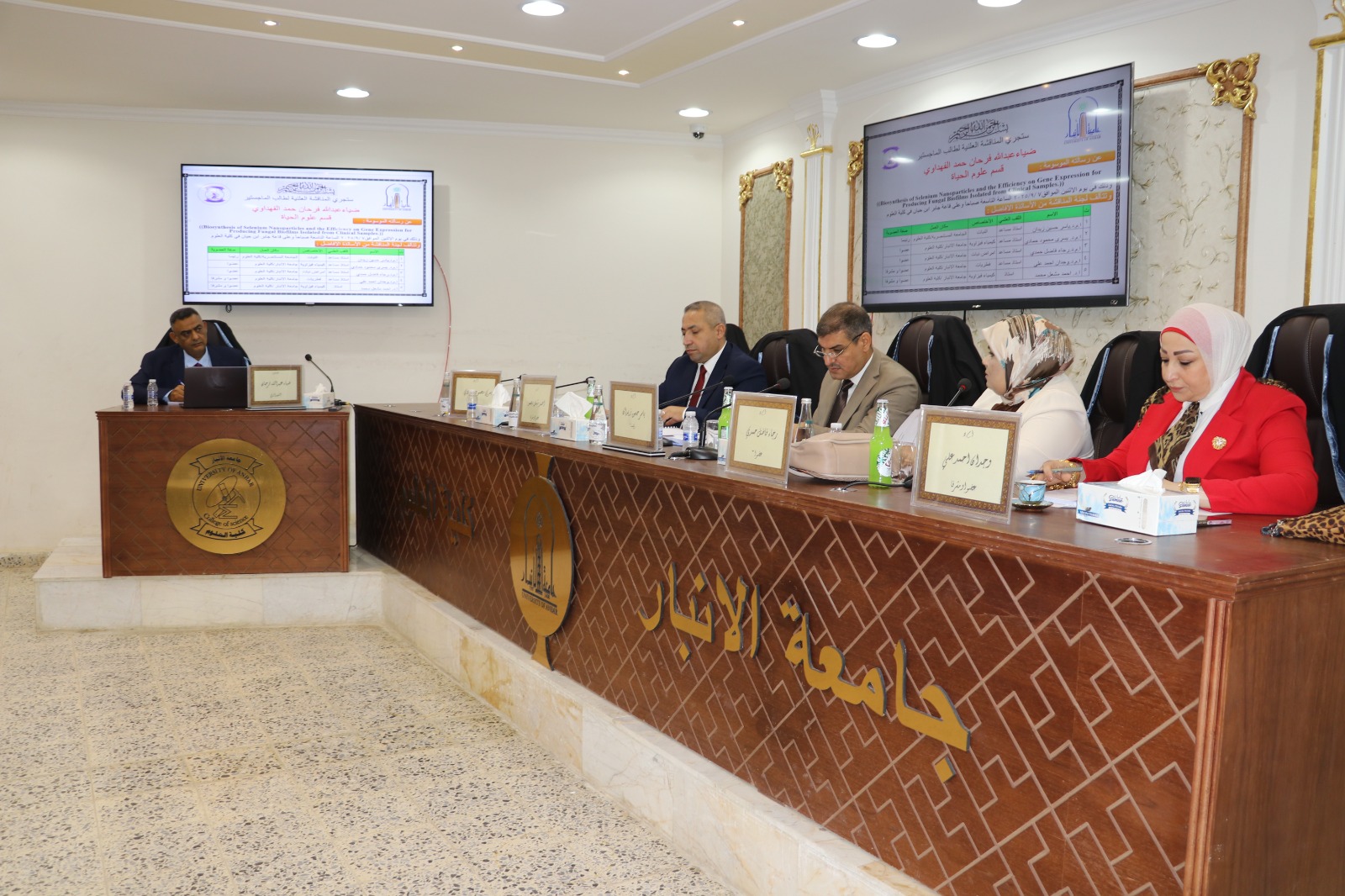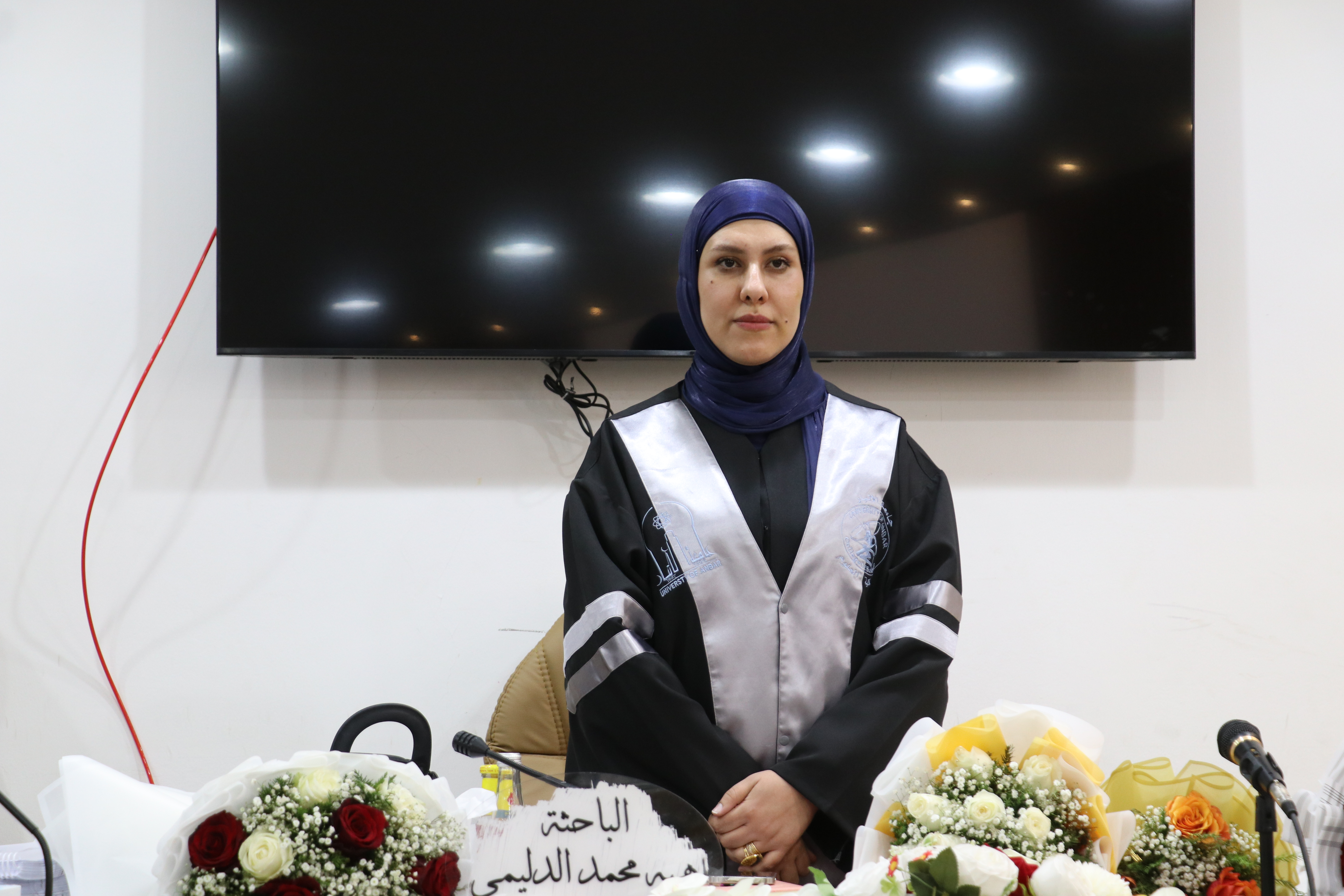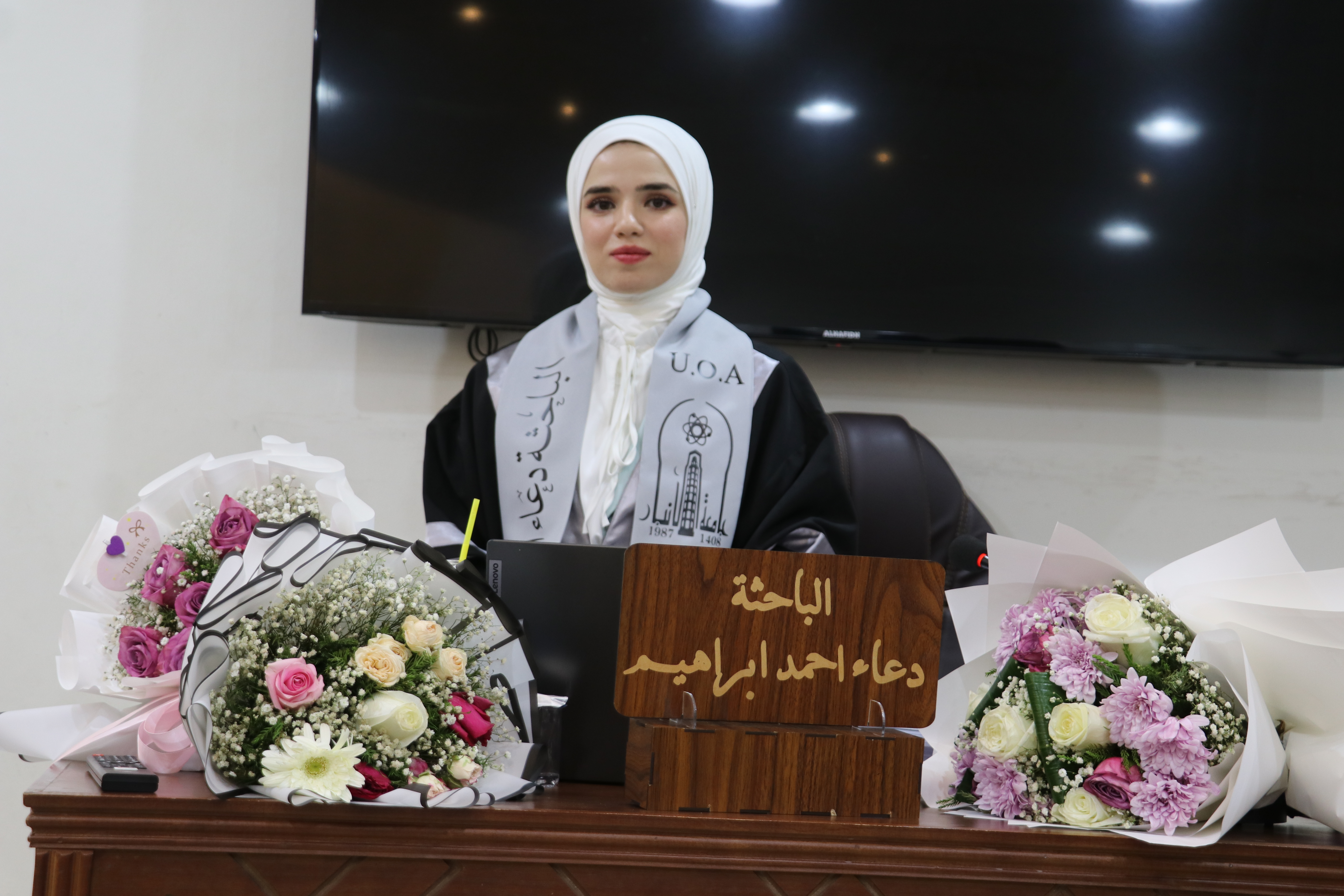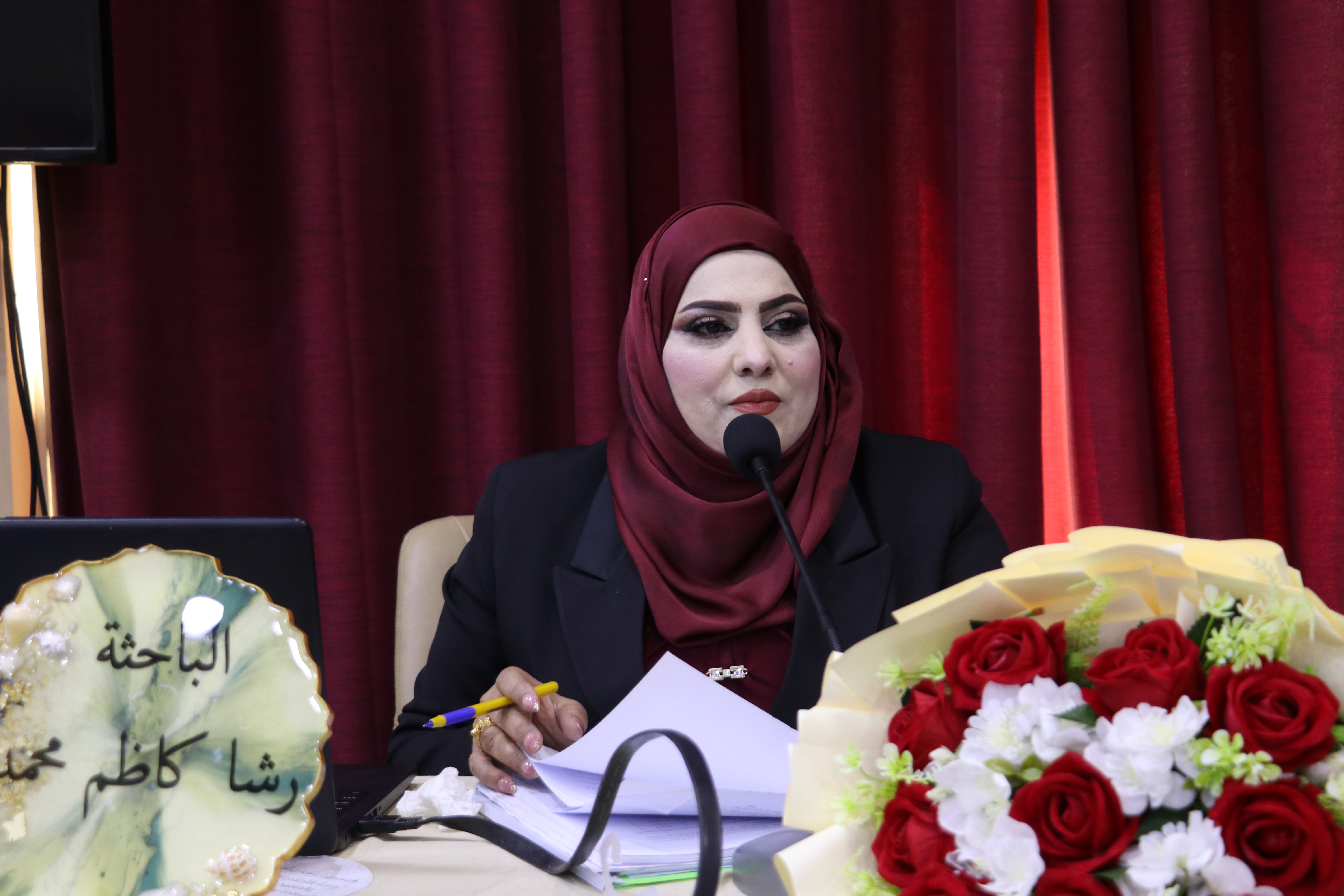The public discussion took place for the master’s student (Dhiaa Abdullah Farhan) Department of Physics- College of Science - University of Anbar on Sunday, September 7, 2025, in Jabir bin Hayyan Hall. for his tagged thesis
" Biosynthesis of Selenium Nanoparticles and the Efficiency on Gene Expression for Producing Fungal Biofilms Isolated from Clinical Samples "
The discussion committee consisted of:
|
University of Mustansiriya - Ibn Al-Haitham College of Sciences - President
|
Assist. Prof. Dr. Yasser Hussein Zidane
|
|
University of Anbar - College of Sciences - Member
|
Assist. Prof. Dr. Yusra Mahmoud Hammadi
|
|
University of Anbar - College of Sciences - Member
|
Assist. Prof. Dr. Raja Fadel Hammadi
|
|
University of Anbar - College of Sciences - member and supervisor
|
Assist. Prof. Dr. Wajdan Ahmed Ali
|
|
University of Anbar - College of Sciences - member and supervisor
|
Prof. Dr. Ahmed Mishaal Mohammed
|
The present study was aimed to studying the inhibitory activity of Mycogenic Selenium nanoparticles and their effect on pathogenic Fungi isolated that producing biofilm from clinical samples and studying the molecular changes on them. Selenium nanoparticles were successfully synthesized using the extracellular metabolites of Fusarium oxysporum. The mycogenic method proved efficient, eco-friendly, and scalable, producing stable, spherical nanoparticles within the nanometric range (60–90 nm) with confirmed elemental composition and crystalline structure. The biosynthesized SeNPs exhibited significant antifungal activity against major clinical Candida species (C. albicans, C. tropicalis, and C. glabrata), particularly targeting biofilm-forming isolates. Minimum inhibitory concentration (MIC) values revealed a dose-dependent response, with complete growth inhibition observed at low concentrations, confirming their therapeutic viability. Quantitative biofilm assays demonstrated that SeNPs disrupted mature biofilms by reducing biomass accumulation and inhibiting extracellular matrix production. These effects were most prominent in strong biofilm-producing isolates, indicating a capacity to overcome structural antifungal resistance. Gene expression analysis through qRT-PCR confirmed that SeNPs significantly suppressed EFG1 in C. albicans and C. tropicalis, as well as EPA6 in C. glabrata. These genes are critical to hyphal transformation, adhesion, and biofilm development—suggesting that SeNPs exert their anti-biofilm activity at the molecular level by interfering with transcriptional regulators of virulence. The biologically synthesized SeNPs demonstrated high selectivity towards fungal pathogens without cytotoxic effects on the fungal cells themselves at sub-MIC concentrations, which supports their safety profile for further therapeutic exploration. Fluconazole combined with selenium nanoparticles showed strong synergy against Candida spp., significantly lowering MIC values. Thia confirms enhanced antifungal activity.

.jpeg)
.jpeg)
.jpeg)
.jpeg)

.jpeg)
.jpeg)
.jpeg)
.jpeg)



